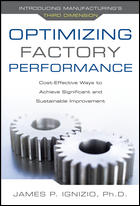Monte Carlo simulations, named for the city in Monaco, were developed during the 1940s with the Manhattan Project. But today’s simulation software can be used for a range of industries and applications to help people make decisions about their products and processes.
According to Palisade Corp., Monte Carlo simulations can be used in applications ranging from retirement planning to military war games to Six Sigma and quality analysis to endangered species preservation. It can be used in fields such as finance, manufacturing, engineering, R&D, and a host of others. Basically, it can be used anytime someone wants to consider the options available before making a decision.
Dr. Eric Maass, co-author of the book “Applying Design for Six Sigma to Software and Hardware Systems,” explains that a lot of people don’t realize what they are missing out on by not using simulation software. By running simulations, they can take the guesswork out of applications. In addition, simulation modeling allows everyone involved in the process, from operators on the shop floor to those in management, to visually understand a system.
Simulation Explained
Simulation can mean many different things, as Maass points out, and comes in a variety of options. Monte Carlo simulation software is general purpose software that can be used for almost everything, Maass says, whereas discrete event simulation is used to model a process, such as looking at a cycle time or its inventory or its throughput.
The software provides a way of analyzing risks and reviewing a series of options in order to make the best decision. It provides some guidance in deciding how to schedule production or how many machines you need. “Simulation will allow you to make that decision,” says Bill Nordgren, founder and CEO of FlexSim. “It won’t do your work for you.”
Statistical, process-driven tools such as simulation software can be intimidating at first. Companies sometimes can be hesitant to use the software because they think it is too difficult. But, as Maass says, Monte Carlo simulation is fun to use and creates interesting graphs that management often responds to. It’s much more interesting to see data depicted this way than just on a spreadsheet. And not only that, it can help companies understand their processes.
Maass described an example of a project he worked on several years ago. A tough vice president called in each project manager to ask how the schedule was coming along. When project managers conceded that they had only moderate confidence in the schedule, there was “virtual blood everywhere,” Maass says. But when one manager met with him to model the risk and uncertainty involved, things changed. At the next meeting, when asked how much confidence he had with the schedule, he was able to reply that according to calculations from a simulation, he was 85% confident. The vice president paused and simply said thank you.
Better Decisions with Data
Obviously this kind of data can enable better decision making. But how to get started? For those who may not have used simulation software before, Monte Carlo simulation might be a good first step. It is general purpose software that can be used for almost everything, Maass says, whereas discrete event simulation is used to model a process, such as looking at a cycle time or its inventory or its throughput.
“Monte Carlo is more general purpose and more fun,” Maass says. And, in the classes he teaches on the topic, one hour into a lesson often provides his students with a whole new perspective. This quick learning time makes it more accessible.
And while time is important in the classroom, it is also important in using software.
“You don’t want to have an optimization run taking two hours,” says John Noguera, CTO and co-founder of SigmaXL. “Speed is important.” His company began working on Monte Carlo simulation software a few years ago after interest from customers. The development took several years, but the result was a Monte Carlo simulation software that can quickly get information in an accelerated mode.
“Let’s say you’re doing an optimization, and every iteration of your optimization you have to do 10,000 simulations,” Noguera continues. “People don’t want to be sitting there for hours waiting for optimization.”
Adding extraneous information to a computer model can also slow things down.
“Simulation is kind of an art as well as a science,” says Nordgren. “You should be able to look at a real system and extrapolate that to a computer model. Provide the model with enough detail that it gives the ability to make decisions, but you don’t want to put things in there that don’t matter.”
Simulation Meets Quality
How does simulation software relate to quality? As Nordgren says, “It kind of goes hand in hand. As you improve your process, quality usually improves. If you’re looking at downtime scenarios in your equipment, fixing the reliability of your equipment, scheduled maintenance vs. unplanned maintenance, these can all affect quality.”
Although new manufacturing ideologies are cropping up all the time, Nordgren says, “The problem is the same, it always has been. Simulation is the study of waiting times.”
“All those manufacturing ideologies were created to solve the same problem,” Nordgren says. “Waiting time is waste. Simulation is the only tool anywhere that can analysis those allocation of waiting times. The only tool that can really measure that, model that, see if you are doing what you should be doing is simulation.”
Whether companies are using Six Sigma or Activity-Based Costing, they can still benefit from lessons learned in simulation and the visuals it provides. “I think the trend has been that companies have wanted more 3-D visualization,” Nordgren says. “Management likes to see the pictures.”
Reduce Waste, Improve Quality
So why do companies decide to try simulation software? Randy Heffernan, vice president of Palisade Corp., says, “A lot of times, it comes out of a larger cost cutting or waste reduction at the company as well as quality improvement.”
It can reduce material waste and the amount of time something can take. In explaining how the software works, Heffernan says people often come across unexpected factors such as the reliability of a supply chain. The cost and availability of a material obviously can have a huge impact on production.
“The risk of not having what you need when you need it is big,” Heffernan says, “But this is not intuitive. The way the machines are calibrated many seem more intuitive. The variation in raw material could impact the finished product. There is an assumption that raw material is just there waiting for you. But that’s not really true.”
With global supply chain issues caused by the floods in Thailand a few years ago or the tsunami in Japan, more people are becoming aware of the supply chain risks and the related quality of manufacturing. “How do you maintain quality in the face of uncertain suppliers?” Heffernan asks. Though companies can find backup suppliers, they don’t want to use too many in order to maintain economies of scale. This is where software can step in to help find a solution. “The software can automatically try different combinations of those input factors and each factor can run a Monte Carlo simulation.”
The software can provide models using three different suppliers, such as sourcing 70% from supplier number one and seeing the uncertainty level. “Software can do those calculations for you,” Heffernan says. “There’s no way people can do that manually.”
The Right Tools
“We focus on speed to answers and better decision,” says David Jones, CEO of Lanner
Group Limited, which focuses on discrete event simulation software. “What we do find is the people that use simulation and have used simulation successfully stick with it and continue to apply it to many parts of their business,” says Jones. And even though they may learn a lot about the software, they still want to focus on their own business. “They are people who want to make decisions and faster—without having to become experts in simulation,” Jones says. Though he has been with the company for 16 years, Jones says he has seen more demand today than ever before, from all aspects of industry.
“It’s a very exciting time for simulation,” Jones says. “I think simulation has come of age.”
TECH TIPS
|














